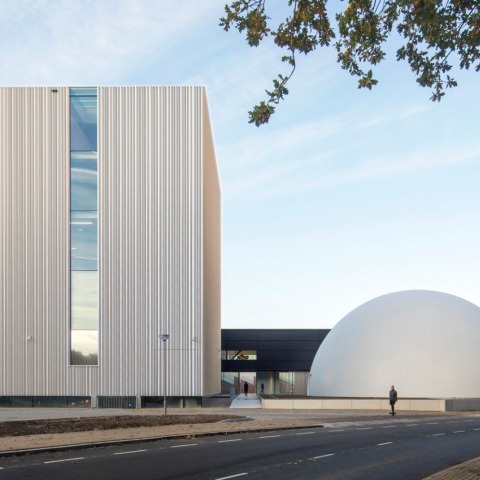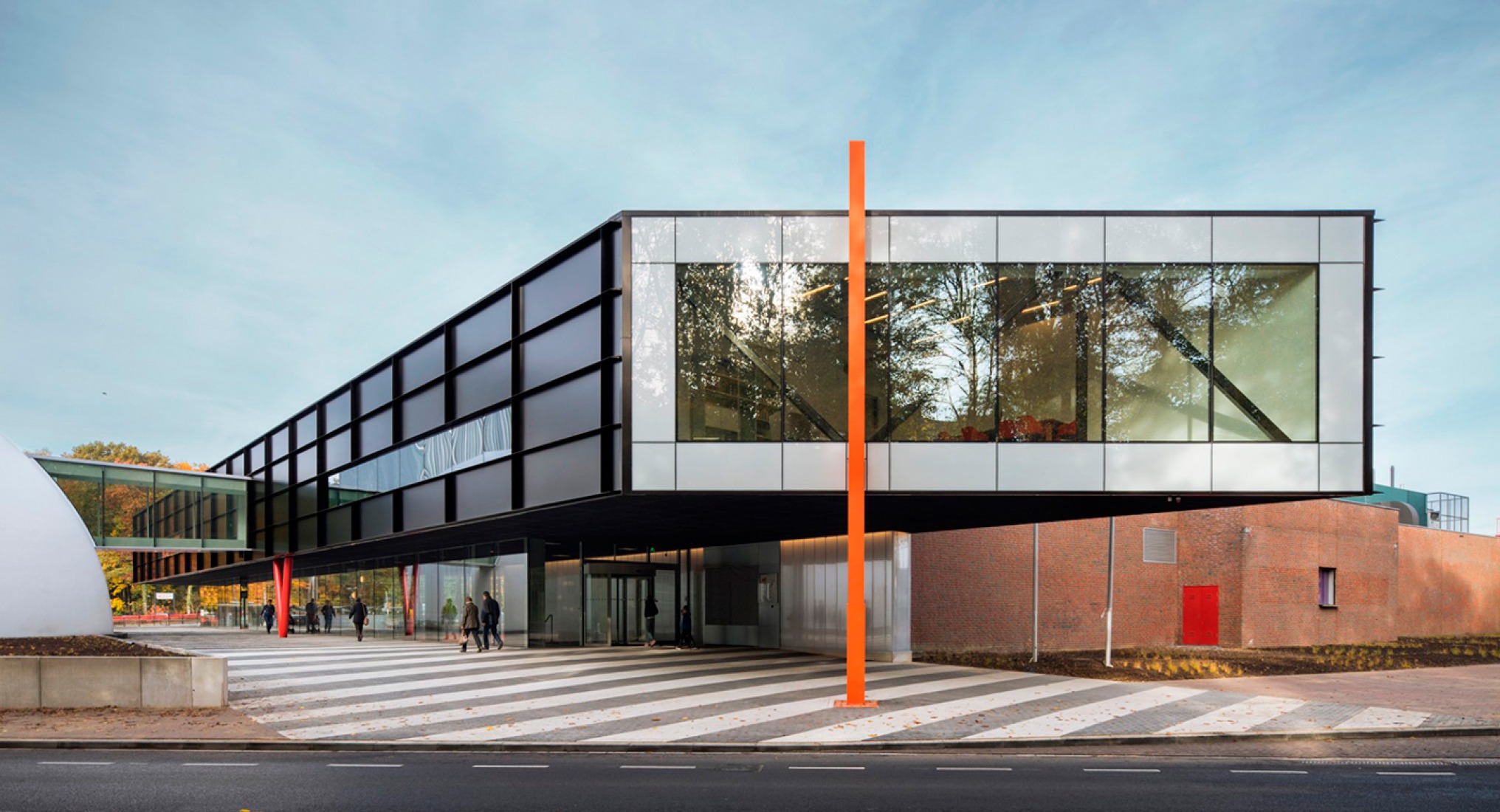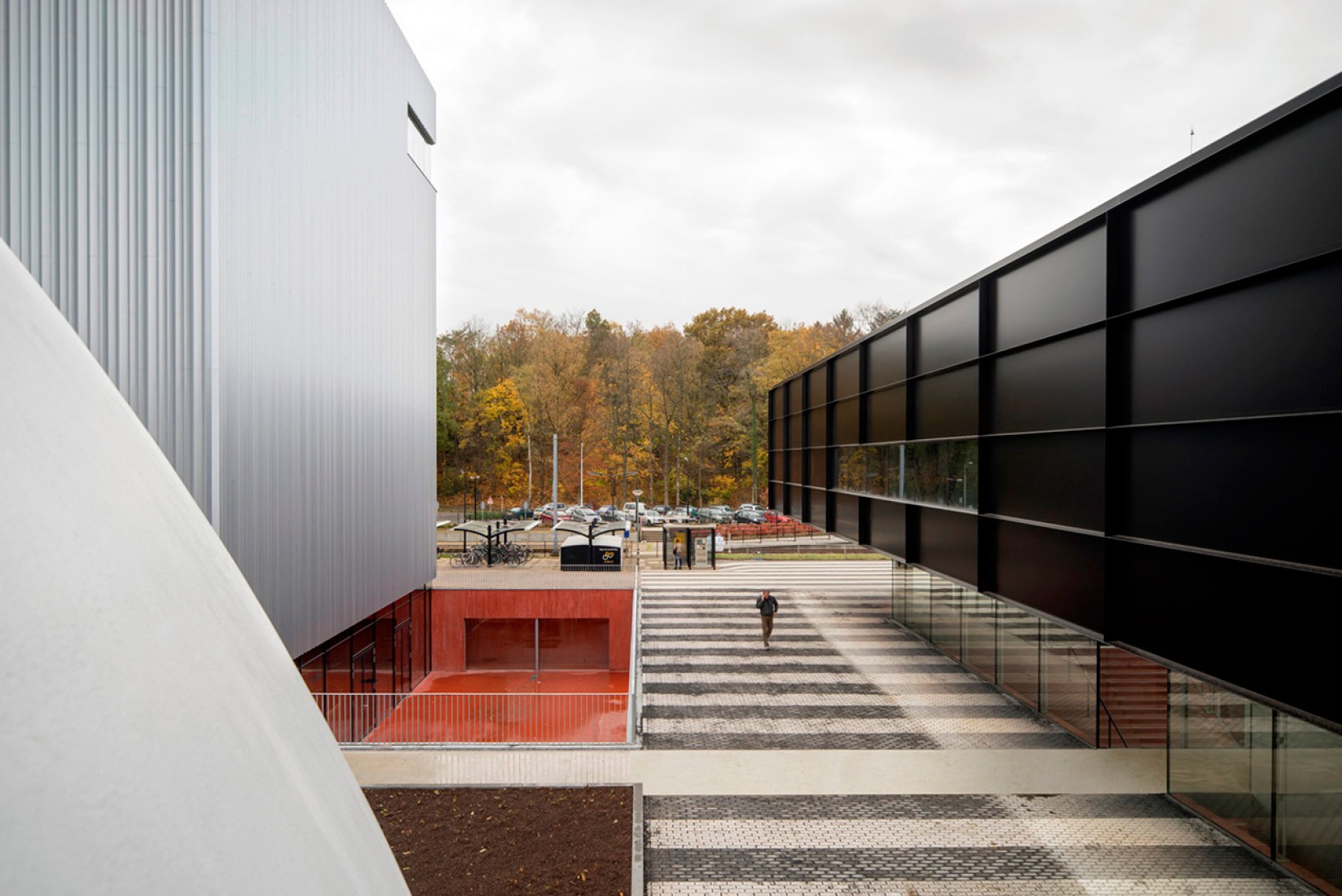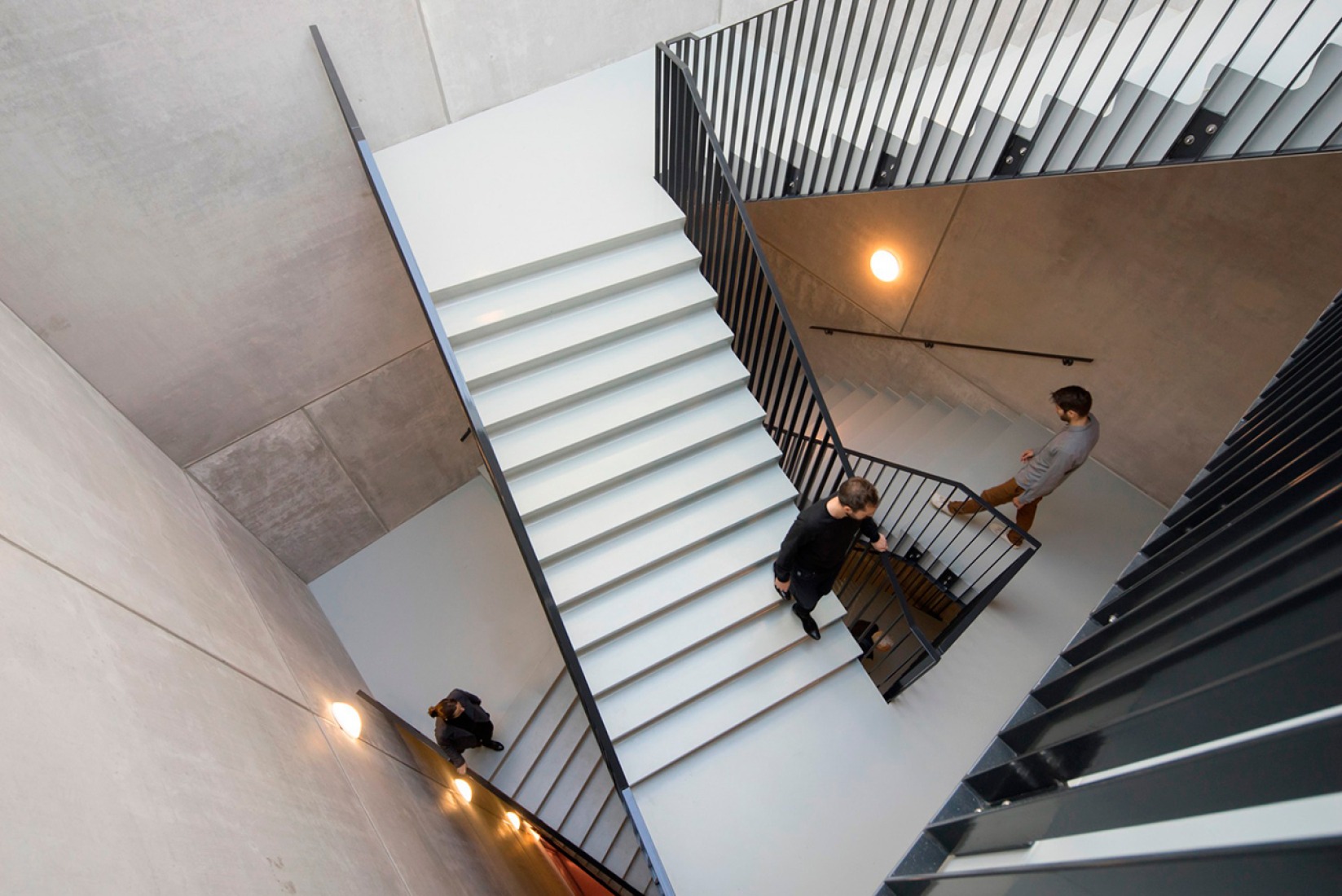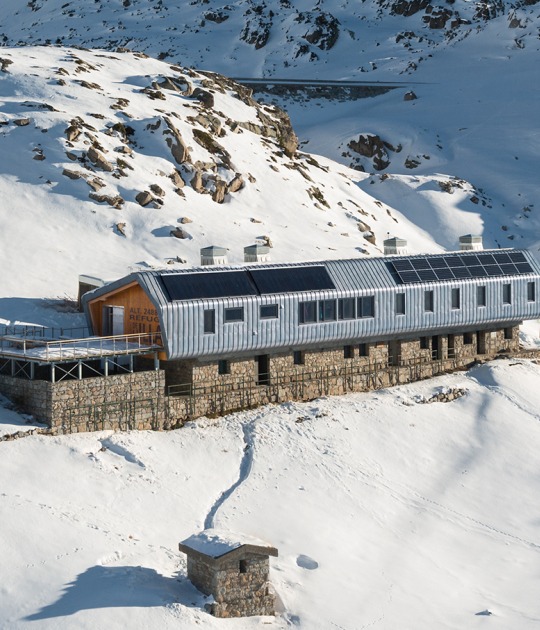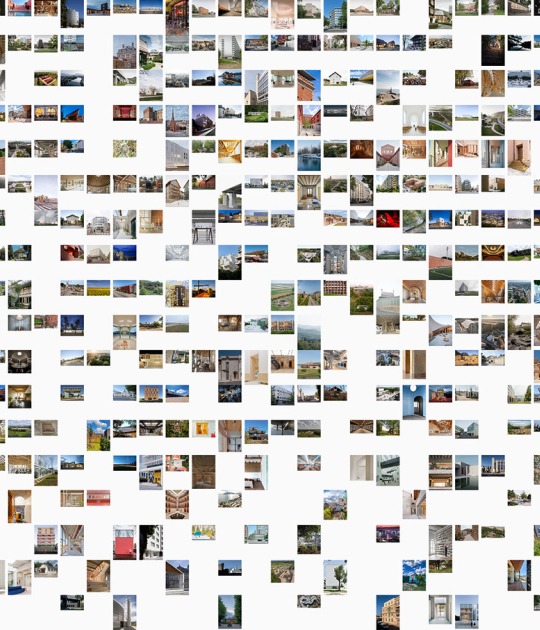The extension of the museum quarter, by Shifting architecture urbanism, formalizes the entrance into Kerkrade for both train passengers and visitors arriving by car from the main access road.
Description of project by Shifting Architecture Urbanism
Museum Quarter
Continuum is a discovery center for science and technology; Cube is a design museum consisting of design expos and exploratory labs, while Columbus houses a unique Earth Theatre shaped as an inverse planetarium and a 3D cinema conceived in partnership with National Geographic. Together, these elements form a “museum without boundaries”, where visitors are regarded as participants rather than spectators. They discover the world and their place in it through interaction, participation, and debate. Hence, in addition to museum galleries, Museumplein Limburg also offers shared facilities for conferences, events, workshops, and education.
The new design consists of a composition of strong solitary volumes: a sphere, a beam, and a cube. Their pure geometry and omnidirectional orientation are a response to the amorphous and introverted character of the existing museum.
A large part of the 7500m2 new program is located underground. By extending the sunken square (the best feature of the original museum) underneath the new volumes, a continuous underground landscape is created that connects all the facilities of Museumplein Limburg, both old and new.
Visitors descend into this space via one of two wide staircases at both ends: one orientated towards the train station and the other towards the town’s center.
In addition to the new museum square, this excavated landscape in red concrete hosts a central entrance hall, a restaurant, an enclosed patio, and two tunnels connecting to Cube and Columbus.
All stairs, walls, and floors of the excavated landscape are made of uniform red concrete to emphasize the connective character of the space. The walls were poured in a form work of rough wooden planks adding a tactile quality that contrasts with the abstract volumes above ground. The excavation out of red concrete, combined with the experience of descending below ground, refers to the mining past of Kerkrade.
Cube, the design museum, is truly a cube of 21x21x21 meters. A glass plinth creates the illusion of a volume floating above the red underground landscape. Together with the patio, this plinth allows for natural light and views into the temporary exhibition space located underneath.
Cube is draped in a reflective curtain of coated steel that emphasizes the vertical character of the museum. The curtain effect is obtained by the random placement of vertical profiles of three varying folds that each reflect the light differently.
The design museum is conceived as a vertical exhibition machine. The various floors of the building offer generic column-free exhibition spaces in prefab concrete, allowing exhibition designers to appropriate them according to any given theme. The top floor accommodates a multi-functional event space that can be partitioned in different ways using a curved curtain system. The only specifically shaped element in Cube’s interior is the main staircase with randomly rotated straight flights, creating the effect of a cascade falling down a 25-meter-high void.
Columbus is a spherical building, half above ground and half underground. The lower half accommodates the Earth Theatre, where a spectacular, 16-meter wide and 9-meter deep, hollow projection sphere can be viewed from two rings of glass balconies. This inverted planetarium offers visitors the experience of an astronaut looking back toward planet earth.
In the upper half of the Columbus sphere, underneath the dome, a circular auditorium houses the first National Geographic 3D cinema in Europe.
Columbus’ cupola is made of two shells of shotcrete. The seamless shotcrete skin emphasizes the absolute form and its density guarantees sound insulation from the loud shows inside.
An important part of the communal functions of Museumplein Limburg are located in the 80-meter-long beam volume, hovering above the sunken entrance zone. The beam serves as a giant canopy for the pedestrian route from the train station through the museum district toward the town center. The beam is clad in a black modular facade with protruding ribs which create a heavy visual impact, while its minimal amount of columns emphasize its floating character and keep the entrance hall underneath as open as possible.
The public walkways crossing through Museumplein Limburg firmly embed the museum district into the public space of Kerkrade. On the walkway to and from the train station, designed as a scaled-up zebra crossing, pedestrians can see lively areas such as the entrance hall, the sunken square, and the temporary exhibition hall underneath Cube.
A transverse walkway, punching through the entrance hall, connects the sunken museum square to the district’s bus terminal in the forecourt. This walkway provides train and bus passengers direct access to the museum’s restaurant which can double as a waiting room, transforming the museum square into a true extension of the public realm of Kerkrade.
The combination of public space and public transport with the museum district fits perfectly with the ambition of a “museum without boundaries”: even passers-by become participants.
